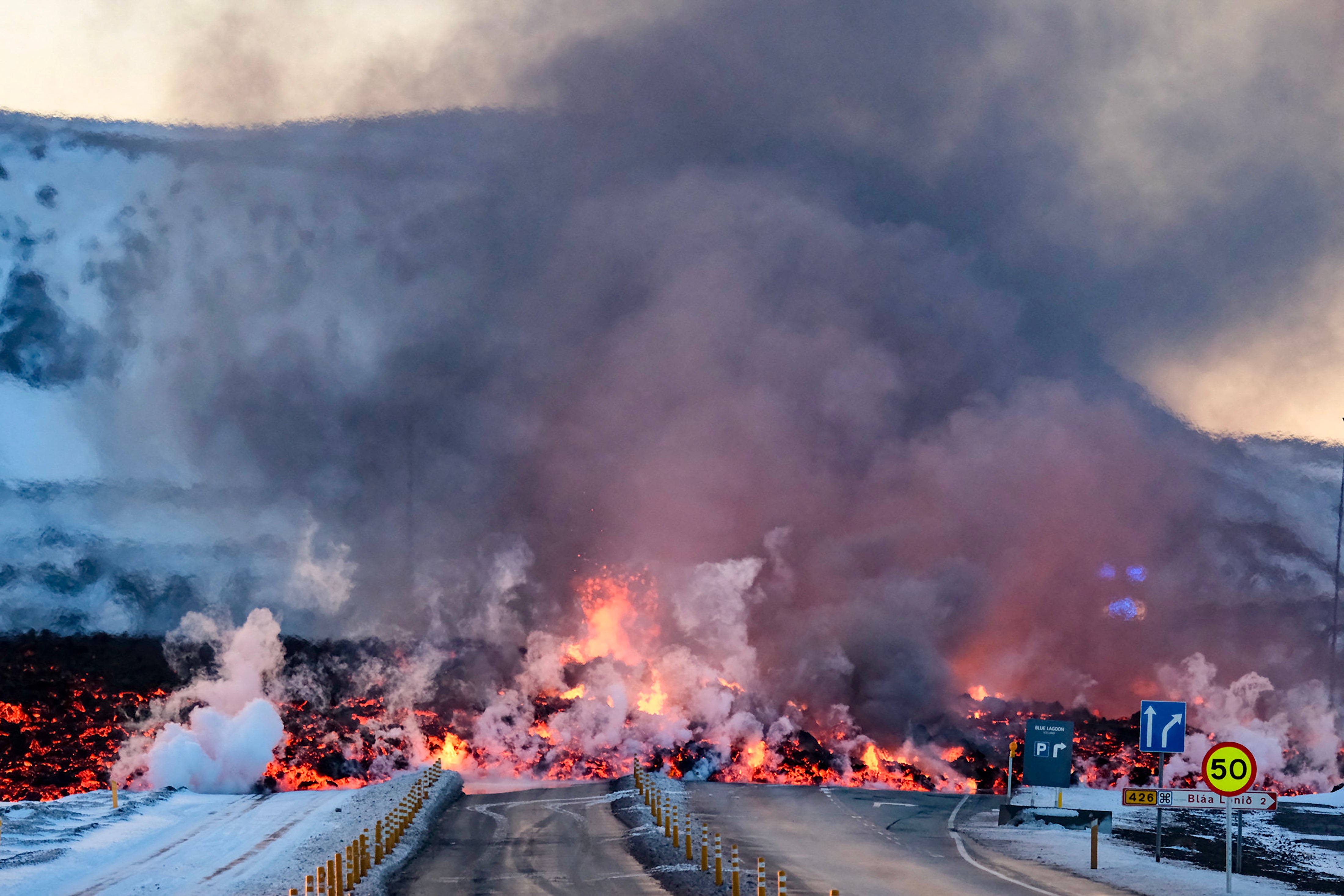Iceland volcano erupts spewing lava near Grindavik as Blue Lagoon closed again
Eruption begins soon after intense burst of seismic activity
Your support helps us to tell the story
From reproductive rights to climate change to Big Tech, The Independent is on the ground when the story is developing. Whether it's investigating the financials of Elon Musk's pro-Trump PAC or producing our latest documentary, 'The A Word', which shines a light on the American women fighting for reproductive rights, we know how important it is to parse out the facts from the messaging.
At such a critical moment in US history, we need reporters on the ground. Your donation allows us to keep sending journalists to speak to both sides of the story.
The Independent is trusted by Americans across the entire political spectrum. And unlike many other quality news outlets, we choose not to lock Americans out of our reporting and analysis with paywalls. We believe quality journalism should be available to everyone, paid for by those who can afford it.
Your support makes all the difference.An enormous flow of lava has engulfed a road in Iceland as the third volcanic eruption in recent months hit the region, with tourists forced to evacuate from a thermal spa.
The Sylingarfell volcano, located about 3km north of the town Grindavik in the southwestern part of the country, started erupting on Thursday morning.
Videos from the area showed fountains of bright-orange molten rock spewing from fissures in the ground and thick smoke billowing into the air.
Other dramatic images showed a growing pool of lava hitting a hot water pipe and spilling onto the main road leading to the nearest town.

“Warning: A volcanic eruption started north of Sylingarfell,” the Icelandic Met Office said on its website.
It said the eruption is in roughly the same location as an earlier one on 18 December.
Blue Lagoon thermal spa, one of Iceland‘s biggest tourist attractions, was closed and guests were evacuated to hotels, announced national broadcaster RUV.
Watch live: Iceland volcano spews lava near Grindavik as it erupts for third time in two months
The Met Office said lava was flowing to the west and there was no immediate threat to the town of Grindavik - evacuated after a previous eruption late last year - or to a major power plant in the area.


Civil Defence officials said that no one was believed to be in the town at the time of the eruption, Icelandic national broadcaster RUV reported.
“They weren’t meant to be, and we don’t know about any,” Vioir Reynisson, the head of Iceland‘s Civil Defence, told the outlet.
This is the third eruption since December of a volcanic system on the Reykjanes Peninsula, which is home to Keflavik, Iceland‘s main airport.
There was no disruption reported to the airport on Thursday.
The Icelandic Met Office earlier this week warned of a possible eruption after monitoring a build-up of subsurface magma for the past three weeks.

The amount of magma or semi-molten rock that had accumulated was similar to the amount released during an eruption in January.
Hundreds of small earthquakes had been measured in the area since last Friday, capped by a burst of intense seismic activity about half an hour before the latest eruption began.
Iceland, which sits above a volcanic hot spot in the North Atlantic, averages an eruption every four to five years.
Iceland, which is roughly the size of the US state of Kentucky, boasts more than 30 active volcanoes, making the north European island a prime destination for volcano tourism – a niche segment that attracts thousands of thrill seekers.
The most disruptive in recent times was the 2010 eruption of the Eyjafjallajokull volcano, which spewed huge clouds of ash into the atmosphere and led to widespread airspace closures over Europe.

Grindavik, a town of 3,800 people about 50km south-west of Iceland‘s capital Reykjavik, was evacuated in November when the Svartsengi volcanic system awakened after almost 800 years with a series of earthquakes that opened large cracks in the earth between the town and Sylingarfell, a small mountain to the north.
The volcano eventually erupted on 18 December, sending lava flowing away from Grindavik.
A second eruption that began on 14 January sent lava towards the town.
Defensive walls that had been bolstered since the first eruption stopped some of the flow, but several buildings were consumed by the semi-molten flow.
Additional reporting by agencies

Join our commenting forum
Join thought-provoking conversations, follow other Independent readers and see their replies
Comments